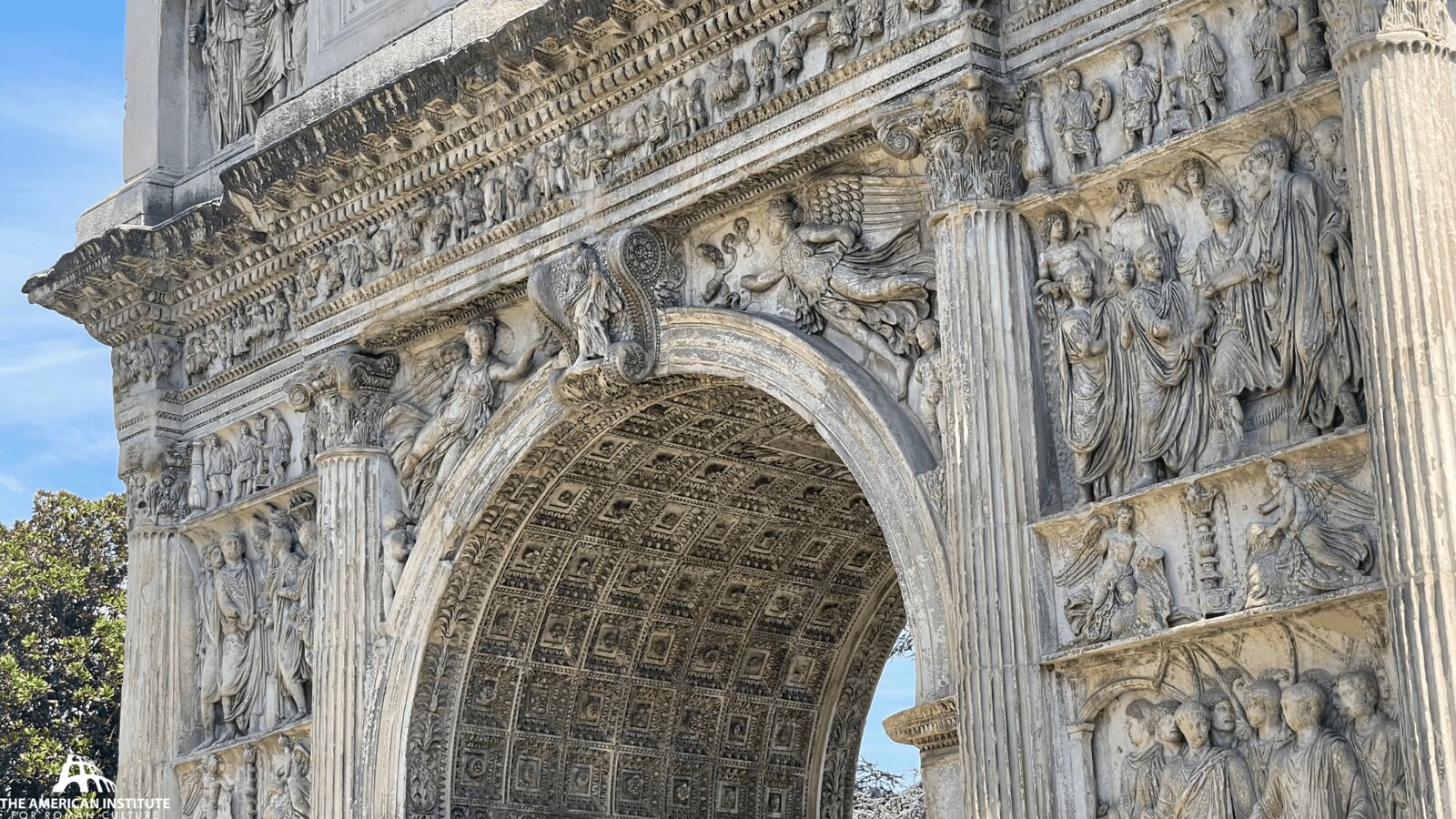Start with our video overview:
The Arch of Trajan in Benevento is one of the finest and best-preserved triumphal arches from ancient Rome. Built between 114 and 118 CE, this structure was more than just an architectural marvel, it was a bold statement of imperial power and achievement. Commissioned during the reign of Emperor Trajan, one of Rome’s most successful rulers, the arch celebrated both military conquests and civic reforms, reinforcing Trajan’s image as a just and victorious leader.
In antiquity, Benevento (then known as Beneventum) was a strategic hub along the Via Appia, Rome’s famous road connecting the capital to the southern port city of Brindisi. As a vital stop along this trade and military route, Benevento flourished during the imperial period, becoming one of the most important cities in the region. Emperors recognized its significance, commissioning grand structures to enhance its prestige. One of the most ambitious projects in Benevento was the construction of the Via Traiana, an alternative to the older Via Appia. Built under Trajan, this new road provided a faster and more direct route to Brindisi, following the scenic Adriatic coast. The Arch of Trajan was erected at the entrance to Benevento to mark the completion of this grand infrastructure project.
The arch’s intricate carvings and reliefs tell the story of Rome’s prosperity under Trajan, blending depictions of military triumphs with scenes of civic generosity and imperial duty. Trajan was one of Rome’s most accomplished military leaders, known for his Dacian Wars, which expanded the empire to its greatest territorial extent. The arch proudly celebrates these victories. One relief shows Trajan’s triumphal procession, with the emperor leading his army through Rome after the conquest of Dacia. Another panel depicts the goddess Victoria crowning Trajan, symbolizing his divine favor and military success. Personifications of Dacia, surrounded by captured weapons and armor, reinforce Rome’s dominance over its enemies.
The arch also highlights the emperor’s contributions to Roman society. A relief portrays Trajan addressing the Senate, emphasizing his cooperation with Rome’s governing body. Another shows the emperor founding new cities, demonstrating his commitment to expanding Roman civilization. A striking panel depicts Trajan offering sacrifices to the gods, reinforcing his piety and connection to Rome’s religious traditions. One of the most touching scenes shows Trajan distributing bread to poor children as part of the alimenta, a welfare program that provided food and financial aid to impoverished families. Through these depictions, the arch presents Trajan not just as a conqueror, but as a benevolent and wise ruler, devoted to both the empire’s expansion and the well-being of its people.
More than 1,900 years later, the Arch of Trajan remains one of the best-preserved triumphal arches from Ancient Rome. While time and weather have eroded some of its details, much of the original artistry survives, allowing visitors to admire the skill of Roman sculptors and architects. Unlike many other imperial monuments that were later dismantled or repurposed, the arch has remained largely intact, a testament to its cultural and historical importance. Today, the Arch of Trajan stands as a reminder of Rome’s golden age, when the empire was at its height and its leaders sought to project both power and prosperity.
Bibliography
- Arya, Darius. (2023). “Travel Via Appia Traiana – Emperor Trajan’s Route to Brindisi.” Ancient Rome Live. https://www.youtube.com/watch?v=e33dE8jKCus
- Bates, William Nickerson. (1910). “Casts from the Arch of Trajan at Beneventum.” The Museum Journal. https://www.penn.museum/sites/journal/22/
- Merrill, E. T. (1901). “Some Observations on the Arch of Trajan at Beneventum.” Transactions and Proceedings of the American Philological Association, 32, 43–63. https://www.jstor.org/stable/282609
- Thill, E. W. (2014). “The Emperor in Action: Group Scenes in Trajanic Coins and Monumental Reliefs.” American Journal of Numismatics (1989-), 26, 89–142. http://www.jstor.org/stable/90016902
- Torelli, M. (1997). “Ex his castra, ex his tribus replebuntur: The Marble Panegyric on the Arch of Trajan at Beneventum.” Studies in the History of Art, 49, 144–177. http://www.jstor.org/stable/42622173
This content is brought to you by The American Institute for Roman Culture, a 501(C)3 US Non-Profit Organization.
Please support our mission to aid learning and understanding of ancient Rome through free-to-access content by donating today.
Cite This Page
Cite this page as: Darius Arya, The American Institute for Roman Culture, Arcus Traiani (Arch of Trajan, Benevento),” Ancient Rome Live. Last modified 04/07/2025. https://ancientromelive.org/arch-of-trajan/
License
Created by The American Institute of Roman Culture, published on 04/17/2025 under the following license: Creative Commons: Attribution-NonCommercial-ShareAlike. This license lets others remix, tweak, and build upon this content non-commercially, as long as they credit the author and license their new creations under the identical terms. Please note that content linked from this page may have different licensing terms.





